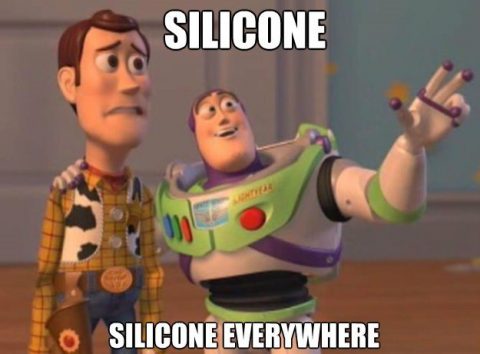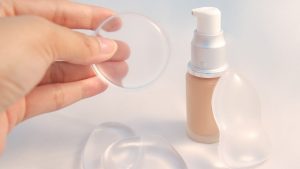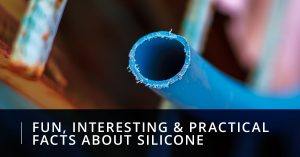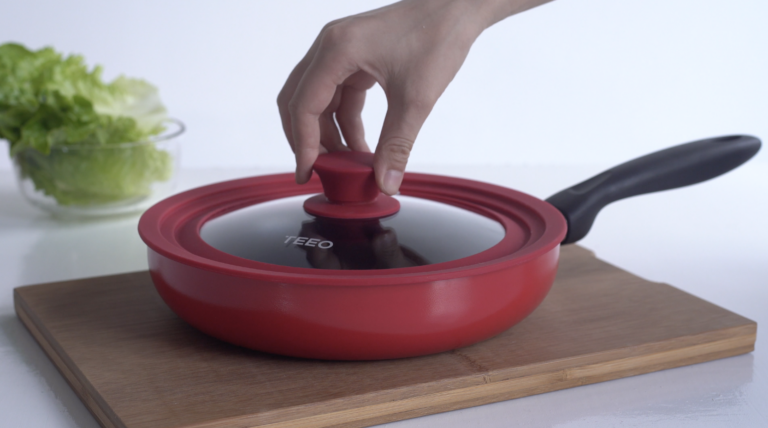When most people think about the silicone items in their home, kitchen utensils such as cake form, scrubbers, gloves, spatulas and
non-stick products usually come to mind. However, there are
a range of unusual and unexpected items in your house that are enhanced by including silicone, constantly improving our way of life. Here are a couple of ways silicone makes its way into your household:
It’s literally surrounding you
Silicone is used in building and construction, able to bond materials such as concrete, glass, granite, steel and plastics, enabling them to work better and last longer. These silicone sealants can absorb pressure and movement within engineering, allowing for more innovative architectural designs. It also helps protect materials and joints from moisture, heat, corrosion, sunlight, ultraviolet radiation, pollution and other chemicals.
You’re looking at or holding silicone right now
Silicone is a semi-conductor, meaning that it can conduct electricity only in certain conditions and acts as an insulator under others. These characteristics make it an ideal material for making transistors that amplify electrical signals. Coatings for electrical products, such as keypads, keyboards and copier rollers, as well as the hard coatings for computers, facsimile machines, telephones and home entertainment equipment are all made from silicone.
It’s not just silicone spatulas in your kitchen

Silicone is great for cooking utensils, as it has no odor and can go from the freezer to the oven, microwave or dishwasher without affecting the quality of the product or the food, however it is used in other aspects of your kitchen too. Household cleaners and polishers often include silicon to enhance shine and spread easily.
Use a car to get to work every day

Silicone adhesives and coatings ensure that vehicle exteriors are more resistant to rain, wind, salt, abrasion, ultraviolet radiation and chemicals. Joints last longer and overall maintenance and repair is less costly. Silicone is used in a huge range of car parts, such as airbags, hydraulic bearings, ignition cables, shock absorbers and headlamps.
Do you use a spacecraft, airplane, high-performance automobile, submarine, or boat? Perhaps you don’t regularly, but we’d be surprised if you’ve never used one of the aforementioned vehicles at least once in your life. If you have, you should know that silicones offer durability, adhesion, and general strength required for these vehicles to function. In terms of silicone adhesives, vehicle exteriors which utilize silicone will be more resistant to environmental factors like salt, radiation, common chemicals, rain, wind, and general abrasion. This has the net effect of fewer repairs and therefore lower costs in terms of upkeep.
Beyond that, silicones are used in a wide range of vehicular parts, including silicone hoses, engine gaskets, shock absorbers, cushioning, airbags, ventilation flaps, and hydraulic bearings.
You might be wearing it
Silicone is used in a variety of make-ups, cleansers, shampoos and other personal care products to improve shine and texture.

Silicones are commonly used in the world of personal care products and cosmetics. Because silicone is non-toxic and so versatile in function, it can be used to make a great number of cosmetic products more attractive and useful. To the former point, silicone is used to improve the smooth texture, luster, and shine of personal care products. In deodorant, they help reduce the appearance of white residue while making a variety of other shaving creams, shampoos, and lotions more long-lasting and effective.
Restoration Projects

Silicone is truly an amazing material, in case you haven’t figured that out yet. It’s being used in premium paints to help prolong the lifespan of the exterior coatings on houses, commercial structures, and even vehicles. But beyond that, silicones are also used to restore landmarks and other historical buildings without harming the original material’s integrity. The silicone adhesives are used to increase the strength and durability of specific structural joints while also improving the water-repellant functionality of materials like limestone or sandstone — both of which are quite porous without treatment.
Interesting Facts about Silicone

We will now provide you with an assortment of interesting, fun, and practical (if not arbitrary) facts about silicone. Some of these you might find superfluous and common, but others might literally change your life forever. How could something like that be so? Well, you’ve got to keep reading to find out.
Let’s start with a basic distinction: silicone is not silicon, and silicon is not silicone. Silicone is a synthetic substance whereas silicon is a natural chemical element that can be found on the periodic table (it’s the 14th element, in case you were wondering). Silicon, as it turns out, is one of the most abundantly found elements in the Earth’s crust, trailing only oxygen. It’s a metalloid, which means it contains both metals and nonmetals.
Silicone is a synthetic polymer that is comprised of oxygen, silicon (wouldn’t you know it), and other elements like hydrogen and carbon. It’s plastic with some flexibility to it.
Silicone is used in a wide variety of applications (a fact that keeps us in business!). Due to its low levels of toxicity, capacity to resist high heat, electrical insulation, and relative cost-effectiveness to manufacture, you can find silicone being used in a great many industries.
Speaking of silicone uses, it’s often used in plumbing pipes, automotive parts, implants, bandages, contact lenses, cosmetic and personal care items, oven mitts, cookware coatings, electronic-product casings, and the list goes on.
In the energy sector, silicone helps better the performance, general efficiency, and durability of solar panels. Because the use of silicone helps solar panels last for many more years than alternative materials, its application helps improve the overall cost-effectiveness of using solar panels and photovoltaic devices.
Interestingly enough, silicone is being used in novel kinds of paint to enhance the durability of whatever building or vehicle on which they have been applied. This silicone-enhanced coating helps the paint endure extreme temperature changes, decreasing the likelihood of eventual cracking.
In the field of construction, silicones help with the building of both commercial and residential buildings. The use of silicone helps architects construct energy-efficient structures, whereas more common uses include utilizing silicone sealants and caulks to prevent harmful bacteria and moisture from taking hold.
We mentioned silicone being a part of many cosmetic and personal care products above, but do you know to what extent? From shampoos to shaving creams to lotions, sunscreens, and cleansers, it’s fairly commonplace at this point. The reason for this near ubiquity is that silicone, unsurprisingly at this point, improves the long-lasting nature of a variety of products, helping them keep their color, shine, or what have you. It even helps products with their “spreadability,” if that’s a word!
In the world of sporting goods, silicone has a presence too. The most common use of silicone is a remarkably practical one; it is used to seal goggles and diving masks. It’s also currently being used by innovators looking to develop new sporting apparel that is durable, water repellent, and lightweight — all while staying breathable.
The majority of silicone elastomers and fluids are recyclable. Of course, they last decades upon decades in most circumstances, so you don’t have to worry about throwing them in the recycle bin any time soon!
Some silicones can repel water while, remarkably, other silicones can absorb it.
Silicone is so durable that many of the structural silicone sealants that were used in buildings over 30 years ago still maintain their credibility to this day!
Think of the most fluffy towels you’ve ever touched in your life. It was a life-altering experience, yes? Well, wouldn’t you know it, you have silicone to thank for such a velvety texture. The most fluffy towels made are done so with the addition of silicone to help them be especially absorbent and supple.




